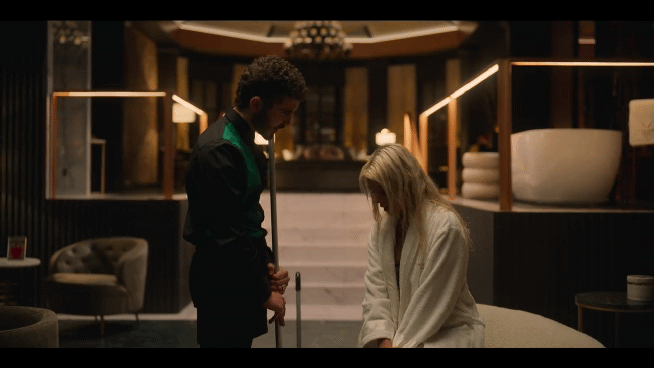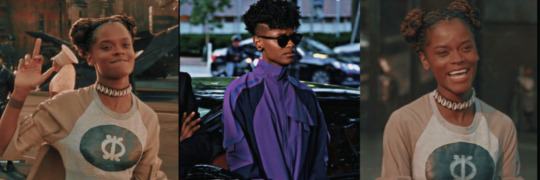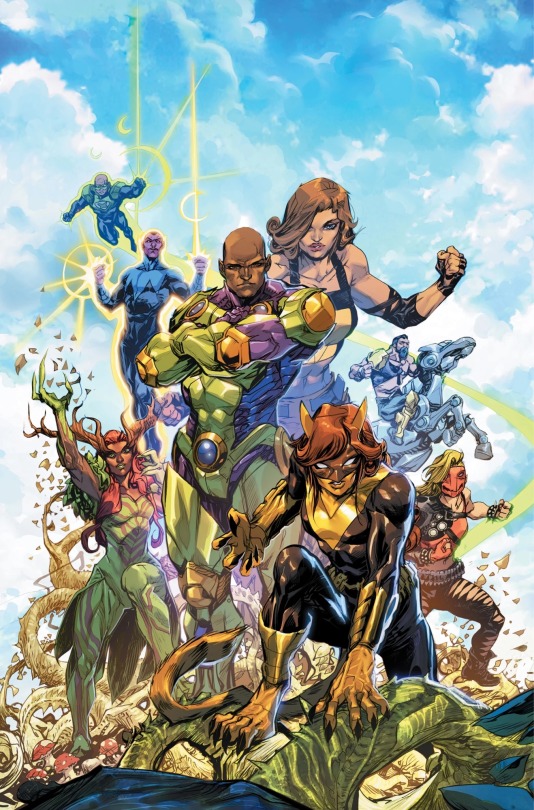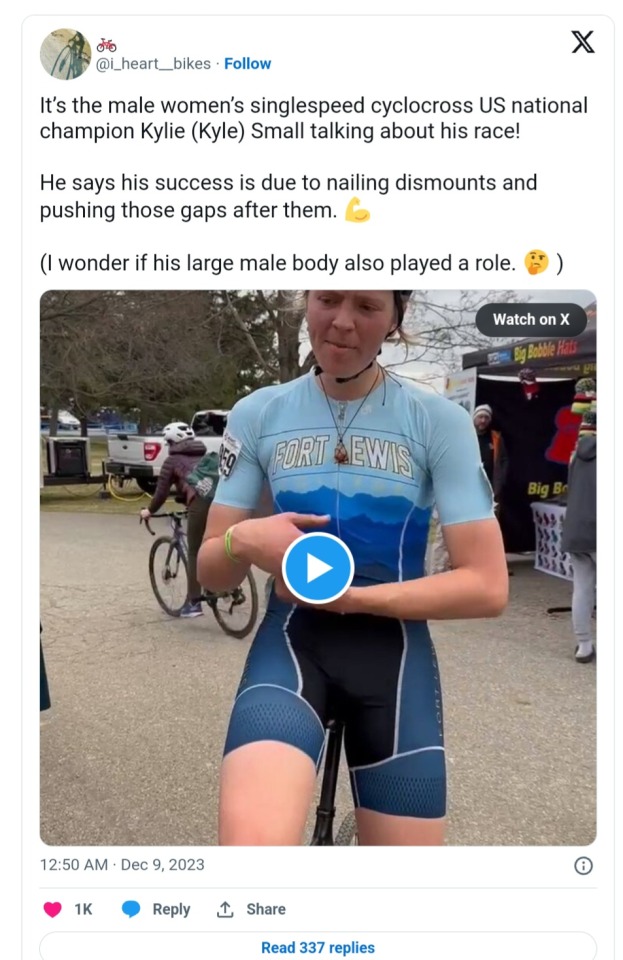#malik elite
Text

#lmao my humor is so elite#also swati is talking about Fresh Air song by Zayn Malik#Spotify#desiblr#desi shit posting#.jpg#lol#twitter memes
176 notes
·
View notes
Text

ZAYN MALIK & ARÓN PIPER
at the Loewe fashion show during Paris Fashion Week on January 20th, 2024
#aron piper#aronpiperedit#elitecastedit#elite cast#apiperedit#zmalikedit#zayn malik#post type: photos#*#person: aron piper#person: zayn malik#people: aron piper x zayn malik
23 notes
·
View notes
Text
Shoemaker on literacy, memory, oral tradition, and the Quran:
Studies of literacy in pre-Islamic Arabia have been severely overlooked in recent Quran scholarship; in fact, literacy in the 7th century Hijaz was "almost completely unknown" and "writing was hardly practiced at all in the time of Muhammad." "[T]here seems to be a widespread agreement among experts on the early history of the Arabic language 'that, before and immediately after the rise of Islam, Arab culture was in all important respects fundamentally oral.'" Ancient graffiti in the region seems to have been a bit like early runic writing in Scandinavia--not central to the culture, mostly decorative and incidental, and certainly not used for long, important texts. "There is, in effect, a lot of 'Kilroy was here' scattered across the Arabian desert." Indeed, most of these graffiti are personal names or private in nature--we're not talking monumental inscriptions here, we're talking bored herders scratching stuff onto rocks to pass the time.
Southern Arabia and the larger oases to the north had more in the way of literate elites (and thus things like monumental inscriptions), but these places were far from the central inland Hijaz. If someone in this region did want to become literate, they would probably have learned to read and write in Greek or Aramaic, which were useful and important linguae francae.
As in very early Christianity, writing occupied a controversial position vis a vis orality--oral tradition was primary for the production and transmission of culturally important things like religious texts, poetry, literary prose, genealogy, and history. The shift to a literate culture came only with the expansion of Muhammad's polity into a wealthy, multicultural empire rather than a tribal state. Indeed, much of the early Caliphate's administration used Greek and other languages--Arabic entered administration only slowly, since a lot of early bureaucrats were drawn from the Roman and Sasanian bureaucracy.
And like early Christianity, another reason not to feel any urgency to write down Muhammad's teachings was that early Muslims expected the end of the world to come very soon, maybe initially even before Muhammad's own death.
The dialect of the Quran is distinctive and unusual; it is very difficult to locate where this dialect might have originated. Ahmad Al-Jallad tentatively identifies an Old Hijazi dialect, but the evidence for this dialect (besides the Quran itself) is limited and mostly much more recent, and he assumes the Quran was produced in the Hijaz.
The Arabic of the Quran can probably be identified with the prestige dialect of Levantine Arabic in the Ummayad period, but the origin of that dialect, and what Arabic dialects were brought together there in that time, is hard to ascertain with certainty.
Shoemaker thinks the Quran started as short collections drawn from individual memories following the conquest and encounters with widespread literacy; these collections would have been considered open, and subject to influence from oral tradition. They were combined into increasingly larger collections, with additional traditions and revisions, emergin as something like divergent versions of the Quran (though still not fully static and closed). Finally, the traditions of these regional versions, with other written and oral traditions, were fashioned into their canonical form under Abd al-Malik, and this version was progressively enforced across the empire.
Shoemaker brings in memory science and the anthropology of oral cultures: memory is highly frangible and fallible. Even though it functions well for day to day tasks, it's important not to overlook how common misremembering and re-remembering alters information in both personal and collective memory when talking about a text that even Islamic tradition agrees was not written down within Muhammad's lifetime.
Most forgetting occurs shortly after an event in question; a small core of memories we develop about an event will persist for a significant time after. These findings have been corroborated both in the lab and in the circumstances of everyday life.
Memory is not primarily reproductive; literal recall is, in evolutionary terms, pretty unimportant, and brains omit needless detail. Remembering thus involves a lot of reconstruction more than it does reproduction; memories are storied piecewise in different parts of the brain, and are assembled on recall, with the gaps being filled in using similar memory fragments drawn from comparable experiences.
Note Bartlett's experiments using a short Native American folktale; when asked to recall this story, even after only fifteen minutes participants introduced major and minor changes. Subsequent recall didn't improve accuracy, though the basic structure of the memory developed pretty quickly in each individual. But this structure was not especially accurate, and significant details vanished or were replaced with new information. Most often this information was drawn from the subject's culture (in this case, Edwardian England), forming a memory that made more sense to them and had more relevance in their context. The overall style was quickly lost, and replaced by new formations, and there was a persistent tendency to abbreviate. After a few months, narrative recall consisted mostly of false memory reports, a finding verified by subsequent replications of his experiments.
Experiential and textual memory in particular degrades very rapidly; this degredation is much faster when information is transmitted from one person to another. Epithets change into their opposites, incidents and events are transposed, names and numbers rarely survive intact more than a few reproductions, opinions and conclusions are reversed, etc. Figures like Jesus or Muhammad will hardly be remembered accurately even by people who knew them.
The style of the Quran (e.g., prose, and often terse, elliptic, and occasionally downright nonsensical prose at that) does not lend itself to memorization; Shoemaker argues it is only possible for people to memorize the Quran now because it has become a written document they can consult in the process.
Eyewitness testimony is of course also notoriously unreliable, despite what apologists (in particular Christian apologists) have argued. Cf. Franz von Liszt's experiment in 1902, where a staged argument in a lecture escalates to one student pulling a gun on another--after revealing this event was scripted and staged, and asking different students to recall the details of the event at different intervals afterward, literally none of them got it right--the best reports, taken immediately, got things about one quarter correct. Even repeatedly imagining a scenario vividly enough can eventually lead to a false memory of it occurring (a phenomenon which may explain some alien abduction reports). People mistake post-even hearsay or visualization for firsthand knowledge, especially in the case of dramatic events.
What memory excels at is remembering broad strokes--we are adapted to retain the information which is most likely to be needed, i.e., the gist (or, more likely, the broad themes) of events and information, and not its exact form.
There's a long digression here about John Dean's testimony on the Watergate conspiracy--this may be the first book in early Islamic studies to have Richard Nixon in the index.
Even competitive memory champions train for short-term recall of large amounts of information; they, and other people with preternaturally good memories, are of course exceedingly rare. It's very unlikely that someone could remember, several decades after the fact, precisely (or even mostly) what was told to them by their friend whose brother's wife's cousin was really there. So even within the traditional account of the Quran's composition, it makes no sense to claim it is in fact the verbatim word of Muhammad.
As in the case of Solomon Shereshevski, when you do have preternaturally good recall even for (say) lists of nonsense syllables, the result is actually kind of debilitating--you have so many useless details to sort through, it makes it quite hard to function at an abstract level. And hyperthymesiacs, though they exhibit a high level of recall about their past, still often remember things incorrectly, at about the same rate as people with normal memories--they are no less susceptible to false or distorted memories.
Nevertheless most modern scholars treat the Quran as a verbatim transcript of Muhammad's words. This is exceedingly unlikely! Especially given that "group" or "collaborative" memory--memories as reconstructed by individuals working together--appears to be even less accurate than individual memory. You get better results having people try to recall events by themselves.
Since during the age of conquests the majority of converts were not closely preoccurpied with the interpretation of the Quran, it would have had to have been rediscovered and hermeneutically reinvented later; the memory of Muhammad's words were being shaped by the nature of the community he founded, as its members collective and individual needs continued to evolve along with the context of transmission.
Many people, both scholars and the general public, seem to believe that people in oral cultures have remarkable capacities for memory not possessed by those of written cultures. Study of oral cultures has shown this is demonstrably false; literacy in fact strengthens verbal and visual memory, while illiteracy impairs these abilities. People in literate cultures have better memories!
Oral transmission is not rote replication; it is a process of recomposition as the tradition is recreated very time it is transmitted. Oral cultures can effectively preserve the gist of events over time, but each time the details are reconstituted, and the tradition can radically diverge from its first repetition, with the stories of the past being reshaped to make them relevant to the present and present concerns.
The collective memory of Muhammad and the origins of Islam as preserved in the Sunni tradition would have forgotten many details as a matter of course, many others because they were no longer relevant to the later Sunni community, and they would have been reshaped in ways that made them particularly suited to the life and community of their contemporary circumstances, exemplifying and validating their religious beliefs--ones very different from those of Muhammad's earliest followers.
The early Muslim conquests put a comparatively small number of soldiers, scattered across a huge territory, in a wildly different cultural and social context, especially in close contact with different Christian and Jewish communities, esp. in the Levant, which rapidly became the cultural center of the new empire. Jews and Christians may have joined the new religious community in large numbers in this time also; their faith and identity would have continued to evolve in this period, as we would expect from comparative episodes in the history of other religions. By the time that Muhammad's teachings were formally inscribed, the memories of his few hundred initial companions would have been transmitted and dispersed to a large number of people in a totally different set of circumstances, with consequences for how those memories exactly were recalled.
Jack Goody, researcher on oral traditions: "It is rather in literate societies that verbatim memory flourishes. Partly because the
existence of a fixed original makes it much easier; partly because of the elaboration of spatially oriented memory techniques; partly because of the school situation which has to encourage "decontextualized" memory tasks since it has removed learning from doing and has redefined the corpus of knowledge. Verbatim memorizing is the equivalent of exact copying, which is intrinsic to the transmission of scribal culture, indeed manuscript cultures generally."
Techniques like the ars memoriae belong to literate cultures and were invented by literate people; they are unknown in oral cultures. Oral and literate cultures in fact have a radically different idea of what it means for a text to be "the same"--in the former, word-for-word reproduction is not necessary. A poem can be "the same poem" even if every time it is performed it is largely unique.
Case of the Bagre, the sacred text of the LoDagaa people of Ghana, an extended religious poem used in a liturgical context. Variations in its recitation aren't just variations in wording; changes in recitation can be radical, and the last version is always the starting point. Nevertheless (as in other oral cultures) it is considered "the same," functionally identical with each recitation. These differences appeared even among different performances by the same reciter, or multiple times in the same ceremony. Even the most formulaic parts have great variability. Similar variability in oral texts in other oral cultures has been documented by other anthropologists, including for historical events.
Shoemaker notes that the tradition that the Vedas were transmitted without variation from the time of their composition remains an article of faith in some quarters of South Asian studies; this flies in the face of all available evidence. In fact we have no idea what the state of the Vedic texts was prior to the earliest manuscripts; they may have been written all along.
Collective memory is shaped by contemporary cultural imperatives--examples of Abe Lincoln, a white supremacist considered nothing special by his peers; Christopher Columbus, once revered; the last stand at Masada, considered a minor event of little importance to broader Jewish history until the founding of Israel.
There doesn't have to be any conspiracy or coordinated effort for false narratives about the past to take root.
The hard horizon of communicative memory is around eighty years; so historical consciousness basically only has two modes: the mythic past of collective memory, and the recent past less than eighty or so years ago.
Lack of a clear "generic" monotheism in the Hijaz around the time of Muhammad's birth means the expectations and memory of Muhammad would have been profoundly shaped by Christian and Jewish beliefs.
Early Islam, like early Christianity, wasn't old enough to have a clear distinction between historical/origins memory and recent/communicative memory.
"For most of the seventh century, then, Muhammad’s followers had a memory that was still immersed in the social and cultural milieux of the late ancient Near East, from which they had yet to clearly differentiate themselves. They eventually would do this in large part by developing a distinctive collective memory for their group, different from those inherited from Judaism and Christianity, a process that was no doubt delayed by their fervent belief that the world would soon come to an end, making such an endeavor rather pointless for a time. Only as the end continued to remain in abeyance, and the community’s living memory grew ever distant from the time of origins did they develop a collective memory of their own. Yet, as Islamic collective memory began to evolve, one imagines that it initially took different shapes within the various pockets of Believers that were scattered across their empire. The basic elements of this nascent collective memory were, as Halbwachs says of the early Christians, “still dispersed among a multitude of spatially separated small communities. These communities were neither astonished, anxious, nor scandalized that the beliefs of one community differed from those of another and that the community of today was not exactly the same as that of yesterday.” Thus, we should expect to find a significant degree of diversity in religious faith and memory among the different early communities of the Believers, scattered and outnumbered as they were among the Jews and Christians of their burgeoning empire. Only with ʿAbd al-Malik’s program of Arabization and Islamicization was a new, distinctively Islamic collective memory and identity concretized and established for this new religious community. It was a collective identity that was formed from the top down and imposed, at the expense of any other alternative collective memories, with the full power and backing of the imperial state."
The limits of oral tradition apply even more strongly to the hadith and biographies.
68 notes
·
View notes
Text
Thoughts on #Elite7
I finished up Elite S7 and I have some thoughts with some gifs. 🥹
Positives:
Rocio got story and screentime. 🎉 I hated seeing her chase after Bilal's worthless ass in S6 cause he didn't even like her & constantly disrespected her yet as soon as he found out her fam is rich, he started singing a different tune. Rocio didn't get as much as I wanted in terms of screentime but enough that she got famliy drama with her mom's illicit activities + romantic drama with Eric. Nico's cousin Eric showed up this season and he's got issues. Rocio & Eric had good chem (much more chem IMO that he has with Chloe) in their attraction to each other.



Eric messes up more than a few times with her yet how he treats her shows care and actual feelings, not just sexual desire. What Elite was building up with Rocio & Eric was love as opposed to what he had with Chloe, which was vices + sex. Sadly, I think this romance with Eric & Rocio will only exist in S7, which is unfortunate with all that good chem and decent build up. 😮💨
2) The surprise appearance of Fiks from Blood and Water! I didn't know about the crossover so it was good to see her. I know Ivan will be in S4 of Blood and Water.

3) I like the crew of Nico, Eric, & Rocio. They have a nice vibe together, good times and bad times, I would say more of this in S8 but I've read that Rocio won't be in S8 so I'll have to enjoy the beginnings of a solid crew that I got in S7 since I'm about to get nothing in S8. I thought the scenes with Nico & his cousin re: Eric's mental health issues were absorbing too. Eric wanted to do better but hated how he felt being on meds. As his uncle said, it's about figuring out the right cocktail to help him with the highs and lows but Eric struggled with patience in that because of the side effects.

4) I adore Ivan so I was glad to see him on the mend from the accident. He's still heartbroken over Patrick's exit and the death of Cruz so much of S7 is him trying to move past his grief. He does that in the form of Joel which is in the next section.

Neutral / Indifferent:
1) Omar / Joel / Ivan... I've already admitted I adore Ivan but for full disclosure, I'm BIG on Patrivan so anything else for them with anyone else was always going to be an uphill battle. I also do not like Omar ever since he cheated with Malik and didn't even apologize to Nadia about it. All this said... I didn't hate this story. I thought it was interesting to show Omar's depression from what happened to Samu but the show spent a little bit too much time with all the back and forth in this story. Joel is alright and his chem with both guys is fine. I just wasn't invested in this triangle and all the angst but it's not a bad story. Dalmar is MVP in it.
2) Chloe and Carmen: I wanted Ivan's mother to show up and Carmen did. She also brought along Ivan's half-sister (to which I need to do some age checking cause pregnancies take time!) named Chloe. Carmen is a golddigger and it made sense why Cruz paid her to stay away from Ivan. That doesn't mean that Ivan didn't have a moment where he got to know his mother a little TOO well. ahem. The drama here with Ivan's new family had potential and was messy but I... didn't care for Chloe's everything is sbout sex story, especially with Eric but also with Raul. All it did was make me roll my eyes a lot in annoyance. The strong-arming that Chloe was irresistible / sexy got tired quickly, especially when she was walking around in her school uniform with her bra out as sign of that "sexiness." Come on!

3) All things Didac, Isadora, and their families: a lot going on and a lot of it didn't move me. Didac & Isadora are fine together so that wasn't the issue for me. The Romeo + Juliet story with the warring families didn't quite work for me. Took up lots of screentime too.

What did work? The hottie undercover cop. That was some nice eye candy.

4) Sonia & Nico... I wanted to see more of them after the S6 drama with Ari and they got shafted in terms of story + screentime toghether, particularly after Nico schtupped Chloe.
Negatives:
1) All things Sara and Raul.

I've hated these two characters since they both showed up in S6 but someone has a hard-on for them in the writers room, particularly Sara. I skipped over many of their scenes with each other and with others. Raul won't be in S8. I wish Sara wasn't as well but she'll be their stinking up things. 🗑️
#elite#elite 7#netflix#elite rocio#rocio duran#elite eric#elite nico#elite sonia#omar shanaa#elite joel#ivan carvalho#eric x rocio#elite chloe#ana bokesa#gleb abrosimov#spain#streaming#elite raul#elite sara#isadora artinan#elite didac#fikele bhele#khosi ngema#elite netflix#kiss#nightclub#dj#andre lamoglia
45 notes
·
View notes
Text
The Ultimate

Shuri x Fem!reader
Warning: None. Like 840 words
Part 1
⎽⎼⎻⎺⎺⎻⎼⎽⎽⎼⎻⎺⎺⎻⎼⎽⎽⎼⎻⎺⎺⎻⎼⎽⎽⎼⎻⎺⎺⎻⎼⎽⎽⎼⎻⎺⎺⎻⎼⎽⎽⎼⎻⎺⎺⎻⎼
East of Wakanda a Tribe living only out of Vibranium, however only 2 left made fully out of the source. Queen Hadi and her husband and King Malik. Together they had only one child.
This child came to be be name Princess Y/fn of the Adamma tribe. Better known as the lost tribe of Marrakech.
Born October 10th, 2004. The strongest beings in the world. Born with multiple powers that she had to train everyday , but babies don’t know how to control things.
Willingly at least.
Telekinesis, Hydrokinesis, Aerokinesis, Geokinesis, and Super Strength.
At 5 she was excepted to learn seven languages at the same time. Was this easy on a child no…of course not. But she did surprisingly well, and by 8 she knew…
- Kech ( Mother tounge ) not counted
-Spanish
-English
-French
-Russian
-Korean
-Japanese &
-Xhosa
At age 9 Y/fn made such advanced technology they created a passage to the quantum realm that only they have access to making them the first of human kind to start civilization there.
At age 10 her mother wanted her to experience the best of life. She thought training her so much at a young age would create a cold blooded killer. Working around chemicals all day didn’t help either.
So they was sent on a trip to North America. Specifically the US. She grew to hate how self centered the people were.
How they consistently harmed their own kind.
How lazy and unfair their laws where.
This did take a toll on her causing her to see how the world really works. Her own people being murdered and mistreated. She does not smile often and has been taught to show no emotion but she could not help but to feel constant aching in her chest when these things happen.
At age 13 they returned home and continued to train. This did not surprise her mother. She was only there for 3 years.
But one day in the US can make you want to blow your brains out.
At the age of 14 she started to perfect her powers. This was not a must but purely for fun. Best part about made of Vibranium is you technically can’t die.
Brute force is one way to destroy the metal, but only if one possesses the strength of a god.
By 15 she was titled The Ultimate by her mother, her father, her people.
Her parents didn’t want her to waste away being that nothing was after them. So they did something.
At 16 the Avengers recruited her.
This can happen if you have an exceptional power or skillset, and happen to catch positive attention from a current member. But in her case her parents made them.
Not that she had a problem with it but come on. Going out and saving people willingly was in no way shape or form better than staying home in her comfortable bed.
Captain America, Iron Man, Thor, Hulk, Black Widow, Scarlet Witch, Spider-Man, Nebula, Rocket, Captain Marvel, Okoye, Black Panther, Ant-Man and more.
Her favorite being Okoye & Black Panther. She considered them ‘her home away from home.’
Okoye is an skilled martial artist and master of staff and spear fighting. She carries a specialized vibranium spear, capable of collapsing into a handle for quick concealment.
A weapon traditionally wielded by members of the Dora Milaje. An elite group of warriors who serve as the all-female special forces for Wakanda.
They also serve as the Black Panther's personal bodyguards. Also known as Prince T'Challa the King of Wakanda and the eldest child of T'Chaka and Ramonda.
⎽⎼⎻⎺⎺⎻⎼⎽⎽⎼⎻⎺⎺⎻⎼⎽⎽⎼⎻⎺⎺⎻⎼⎽⎽⎼⎻⎺⎺⎻⎼⎽⎽⎼⎻⎺⎺⎻⎼⎽⎽⎼⎻⎺⎺⎻⎼
She loved the thrill fighting gave her but before she returned back to her home Prince T’Challa suggested that she goes back with them because they wanted some new weapon ideas and he wanted her to be there when he was crowned king.
To which she agreed. She was going to come back even if she hadn’t to check out some of their technology.
When they landed back in Wakanda she was introduced to The Princess.
Possessing one of the most brilliant minds in the world. Princess Shuri, she also the chief science officer for Wakanda, a position she cherishes much more than her royal status.
“Hello I am y/fn Adam- ” You began quickly getting cut off making her stand with wide eyes.
“I know- I am sorry it is just that I am a huge fan. I have never met anyone made out of Vibranium this is so cool.” The Princess said quickly.
You smirked.
‘Praise kink is on 100’
“I am a big fan of you to. I heard about your Vibranium Gauntlets and theyare absolutely amazing.” You say in awe.
“What a cute little nerd moments they are having.” T’Challa said out loud earning a quick slap to the arm from his mother and a chuckle from Okoye.
You looked around the beautiful land as they spoke. “Could I show you some of my new inventions. I could use an smart persons opinion.” Shuri asked.
“Of course” You replied waving at the others while she held other hand leading you to her lab.
That is where it all started.
————————————————————————————
#wakanda forever#shuri x black!reader#shuri imagines#shuri udaku x reader#shuri x y/n#shuri x black reader#shuri x black female reader#wakandans#tchalla x fem!reader#shuri udaku#king of wakanda
153 notes
·
View notes
Text

sketched some character ideas and these are the only two I liked. Malik Vasili is the leader of a very influential and not-so-secret secret society and Etta is his materialistic wife. The two are pretty pompous, however they are both firmly on the side of good. Their elitism may need to be checked, but their mission is a positive one. Also Malik can turn into a giant lion. Etta has no powers, but is a fantastic organizer and does a lot of the admin work Malik loathes.
10 notes
·
View notes
Text


The Malik Family
Hermes : Luxury Travel Industry
CONTENT WARNING: DEATH OF PARENTS (HOUSE FIRE), DEATH OF SPOUSE (DRUG OVERDOSE)
Ten years ago, tragedy struck for the Malik family - a family known for luxury and elegance in the hotel and travel industry, carrying a legacy akin to the Hiltons. A house fire took the lives of the patriarch and matriarch of the family, thrusting the responsibility of the family dynasty onto the shoulders of the eldest son. What started as a meager hotel business soon spread into a global entity of resorts and luxury getaways under the easy to remember umbrella name of the family namesake: Malik.
With the passing of his parents, First Malik (52) took over as the CEO and Chairperson for the company a decade ago and has felt huge mounting pressures over the last ten years as the organization continues to grow and expand. This has left a void with his wife First Malik (57) and three children, as he has become consumed with his work and making sure that he does his parents proud. Aiding him in this pursuit is his brother First Malik (48), working as the Head of Marketing and Branding. His wife First Malik (50) is a former model turned spokesperson for the company, appearing in many of their commercials and print advertisement material and together they have a young daughter. Another tragedy befell the middle child, when First Patel (46)’s husband passed away from a drug overdose three years ago. Similar to her eldest brother, she has allowed her work ethic to consume her grief, working as the General Manager of Malik-NYC, one of the crown jewels of luxury in New York City. This has led to a strained relationship with her daughter.
Providing an adjacent career and still helping the family name are the twins First Malik (42) and First Malik (42). Both are renowned architects who have used their skills to design upcoming resorts and hotels for the Malik brand. Their collaborative efforts have left an indelible mark on the company’s global footprint, further aided by First Malik (40) who serves as the Head of Global Expansion and Development. In this role, she traverses the globe, securing investments and locations for her twin siblings architectural creations. Between the three of them, they have a list of upcoming resorts and hotels that will debut around the globe in the next few years, further cementing the name “Malik” in the minds of anyone wanting to get away and relax in the lap of luxury.
At the end of the family tree is First Malik (38), taking a completely different route and going to culinary school. She has since been hired on as the Head Caterer at Petal, a Michelin-starred restaurant in Manhattan owned and managed by First Monroe (47), providing a unique alliance of sorts between the two families. The Malik family may have been riddled with tragedy over the years, but continues to defy the odds and maintain their status within the elite circles of New York City.
First Malik: Deceased, N/A, N/A, Unavailable
+ First Malik: Deceased, N/A, N/A, Unavailable
First Malik: 51 Years Old, CEO and Chairperson of Malik, Kumail Nanjiani, Available
+ First Malik: 57 Years Old, Open Occupation, Sandra Bullock, Available
----- First Malik, 29 Years Old, Open Occupation, Zayn Malik, Available
----- First Malik, 27 Years Old, Open Occupation, Sophia Ali, Available
----- First Malik, 25 Years Old, Open Occupation, Anya Chalotra, Available
First Malik: 48 Years Old, Head of Marketing and Branding of Malik, Riz Ahmed, Available
+ First Malik, 50 Years Old, Open Occupation, Aishwarya Rai Bachchan, Available
----- First Malik: 24 Years Old, Open Occupation, Amita Suman, Available
----- First Malik: 21 Years Old, Open Occupation, Avantika, Available
First Patel: 46 Years Old, General Manager of Malik: NYC, Priyanka Chopra, Played by Chels
+ First Patel: Deceased, N/A, N/A, Unavailable
----- First Patel: 25 Years Old, Open Occupation, Naomi Scott, Available
First Malik: 42 Years Old, Architect, Sonam Kapoor, Available *
* Note: Malik (42) and Malik (42) are fraternal twins
First Malik: 42 Years Old, Architect, Rahul Kohli, Available *
* Note: Malik (42) and Malik (42) are fraternal twins
First Malik: 40 Years Old, Head of Global Expansion and Development for Malik, Deepika Padukone, Available
First Malik: 38 Years Old, Caterer at Petal, Jameela Jamil, Available
5 notes
·
View notes
Text

youtube


'How can a sane society permit the medicalisation of children who don't fit gender stereotypes?' - Andrew Doyle
Making predictions is always a mug's game but I think I'll give it a shot.
So, I have a strong suspicion that historians of the future will look back at our current period of time in utter bewilderment. How is it, they will say, that a supposedly sane society permitted the medicalization of children who did not conform to gender stereotypes? How is it that figures in authority in the political class and the medical establishment thought it was a good idea to encourage the use of puberty blockers, which almost always lead to the taking of cross-sex hormones, and sometimes irreversible surgery for kids too young to possibly consent to such interventions?
None of this makes sense.
But there are some signs that the tide is turning. So this week, the NHS confirmed that children suffering from gender dysphoria will no longer be put on puberty blockers in the two new clinics being set up to replace the Tavistock pediatric clinic, which will be closing soon, following the report by Dr Hillary Cass which revealed that it was unsafe for children. The NHS has noted the the ominous exception of "clinical tests" which might end up being a loophole. The draft policy still uses language such as "gender affirming," so we probably still have a long way to go. We're going to have to wait to see what happens. But this is definitely a promising development
Things aren't looking so positive in Wales and Scotland where the governments have seemingly been entirely captured by gender identity activism. And the same is true of the US and Canada.
But gradually, reason will prevail. For one thing, the Tavistock is going to close, although that closure does seem to keep being postponed. And one of the reasons why it was considered unsafe was the use of puberty blockers. The Cass review confirmed that there was simply not enough research into the long-term impact of these treatments.
And one would have thought when it comes to doling out drugs to kids, we might want to be sure that we're not putting them in danger.
In fact, studies show that in the vast majority of cases feelings of gender dysphoria in youth are resolved through puberty, so by blocking puberty, you are blocking the remedy. Whose bright idea was that?
And even in those cases where the feelings persist, surely we can all agree that children aren't best placed to make life-changing decisions about their own bodies. And this has all happened very quickly, mostly because discussion on these issues has been stifled. Only today, Dr Ahmad Malik has tweeted out a thread confirming that he is being investigated by the General Medical Council for expressing concerns that there has been an alarming increase in cases of child gender dysphoria and surgery.
But why should this lead to an investigation? Dr Malik is simply asking some legitimate questions. And it's bizarre that a health professional raising the alarm should be treated as some kind of heretic who needs to be silenced.
All of this can be explained with one word: ideology.
I've spoken before about how a small but powerful elite in the western world have succumbed to a kind of hysteria, particularly around the notion of gender identity. The conflation of LGB with TQIA+ has confused a lot of people, because of course, sexual orientation has got nothing to do with gender. And as I argued on the show last week, gender identity ideology promotes anti-gay rhetoric and anti-gay concepts in order to sustain itself.
If you want to understand how self-styled progressives have got it so wrong, consider this example. In 2020, Pink News released the following report on Pakistan.
"Lastly, in a historic move, transgender people in Pakistan will finally get access to free healthcare. The government plans will also include covering all transition-related costs. Pakistan just said 'trans rights!'"

Of course there was a reason why the government of Pakistan was offering to support transitional surgery. It's the same reason the government of Iran does. Because homosexuality is illegal, and there is a widespread belief that it can be corrected through sex reassignments.
So Pakistan, which by the way has since struck down all legal protections for trans people - it wasn't supporting trans rights at all. It was attacking gay people.
The Pink News couldn't see that, because the impact of ideology is that it blinds you to reason and stifles critical thought. And that's why activists continually misinterpret regressive ideas as though they were progressive.
We know that between 80 and 90% of adolescents who were referred to the Tavistock were same-sex attracted. So they were effectively correcting gay kids. The theocrats of Iran and Pakistan would be proud.
And even for those kids who weren't same-sex attracted, surely there needed to be more discussion. Surely we should be telling young people that there is no one way to be a boy or a girl. That being a tomboy doesn't make you less female, and playing with dolls doesn't make you any less male. And certainly being gay doesn't mean you're trapped in the wrong body.
But in recent years, we've been avoiding those conversations, and as a result, we've been regressing. This latest statement from the NHS is a step in the right direction. Admittedly, it's only a small step, and what feels like an impossible journey.
But if I'm right, the historians of the future will be baffled that we ever allowed ourselves to stray from the path of reason in the first place.
==
Congratulations, I guess, on not giving kids endocrine disorders for being gay.
This is where we're at.
#Andrew Doyle#Tavistock#gender ideology#genderwang#queer theory#gay conversion therapy#gay conversion#homophobia 2.0#homophobia#sex trait modification#puberty blockers#ideological capture#ideological corruption#medical corruption#medical malpractice#medical scandal#medical transition#anti gay#religion is a mental illness
9 notes
·
View notes
Note
Hello! Hope your week has been well. I’ve just watched the show for the first time but unfortunately my Hindi is a little weaker than I would like so I’m not sure if this has been covered on the show or maybe in your asks? I’m sorry if this is a repeat question. I was just wondering if we know about the Raizada family specifically, in terms of whether they’re meant to have generational wealth/is the house ancestral or if Arnav built it. Arnav is “self made” but I’m not sure whether we’re meant to understand the Raizadas as independently wealthy or if the wealth we see is all due to AR doing well as a company. For other Gul shows I’ve noticed class differences are shown thru dialect but Nani seems to be speaking the same dialect as the Guptas so is hard for me to tell. Thank you!
Hello there!
Welcome to Jalebi Weds Bluetooth <3 I love your ask!
I do think I have answered something regarding this but there's never been an in depth answer to this so I'm glad I can think about this!
LONG ANSWER ALERT
Regarding The Raizada's Wealth
Arnav comes from generational wealth from both sides of his family. The Maliks and the Raizadas are incredibly wealthy. I'd say the Raizadas wealth comes from textiles and land. There's nothing concrete here but in Anjali's party Mama-ji does refer to old clients and there seems to be discussion of land, mills in the little business conversations we have in the show.
We know Arnav and Anjali have no wealth from the Maliks' end as Arnav's uncle fraudulently claimed all assets after his brother's death and squandered that away. And I guess by the time Devyani (Nani) brought the kids to her place, the Raizadas were suffering financially as well.
The Raizadas were rich, rich enough to send both the kids - Akash and Arnav - abroad for education (I assume Akash went as well). Harvard is an expensive university - even if we consider Arnav and Akash got scholarship for their degrees.
So I think with the failing wealth of the Raizadas, Arnav probably set up his business idea early on - leaning into the textile background of the Raizadas - and capitalized on that by making a high end fashion brand. And we also know that Mami sold all her jewelry to back Arnav's idea. I'd assume he started thinking of this when he was 18-19. I also feel Arnav never had a childhood after the death of his parents and was very much invested in establishing financial security with the Raizadas ever since he was a teen.
Every memory Arnav brings up of childhood are of days before his parents died, even the ones with Nani and Akash and in the earlier episodes Akash often stated in subtle ways that Arnav grew up very quickly.
So, in the show, Arnav re-establishes the economic status of the family (the Raizadas have always maintained a social status, they never quite disappeared like the Maliks). Arnav only strengthens the social status even further.
Shantivan is a new house. I'd assume the previous Raizada properties were either as a guarantee for loans, sold off or are much smaller compared to what Arnav built for his family.
In the show it is stated several times that Shantivan is Arnav's house (that he bought it) and in lieu of that he is the pseudo head of the family. Which is why Arnav's approval matters so much. And it is also incredibly interesting to watch the struggle Arnav-Nani have at the beginning for she's morally the head of the house, but financially Arnav is.
Also one thing I firmly believe is right in the beginning of the show Arnav is riding on newly found success. He's almost like a young lion who has tasted his first blood. Unlike Shivaay from Ishqbaaz, Arnav's arrogance and fixation with money and status doesn't stem from generational pride and elitism. It stems from financial and social insecurity. His hatred towards conniving middle class people is a direct repercussion of the people he's had to deal with and his own uncle.
Yes, Arnav has never been poor to get to the streets.
But he has faced his assets being stripped away, his family giving up all their money for his education and business idea, and an insecurity over everyone's financial future.
No wonder he was pushed to ensure his family just doesn't get rich, but filthy rich for seven generations.
He is a self made man. Yes he had resources, contacts, backup - but let's simply say that if Arnav didn't exist then the Raizadas wouldn't be having the financial status they had today.
So yes, every sign of wealth we see today is due to Arnav and the empire he built. I think it's very clever how he incorporated his family's textile business.
It's a pity the show really didn't explore this part because it's fascinating! (And Arnav should've been 28 because 26 is an unachievable age for this! If he was a tech guy I'd get it!)
Coming to dialect, I think all the elders in the Raizada household have a strong Lucknowi/UP accent - which is similar to what all the Gupta elders have. While Anjali doesn't have an accent, her Hindi shows her to be very well educated and well versed with the language. She doesn't switch much to English and actually has an incredibly polished Hindi.
Arnav and Akash, Arnav especially, have a very 'returned from abroad' accent that speaks for itself. You know these kids didn't just study at an excellent private school, they definitely went abroad. However, their Hindi is clear enough for you to know that they were raised in India for a significant time.
Also you made an interesting observation about all the elders having similar accents regardless of status. And I think we could factor in what influences accent. I don't think the Raizadas interacted much with foreigners, and learned Hindi in Lucknow - hence the strong Lucknow/UP accent. Definitely they're well versed with English, but prefer not to use it. So since they're usually speaking Hindi - we see their accents. Mamiji tries really hard to speak English because of her fixation with status but we know it works quite the opposite!
Since they all speak Hindi and were very much in their Lucknowi roots, we can see a strong overlap between the way they speak and the Guptas!
The class difference is understandable in the difference of the younger generations' accents. There's hell and heaven difference between Arnav and Khushi's accents. Arnav's Hindi was originally much stronger in the show (in fact there was quite a bit of Urdu there), but he definitely doesn't have the fluency Khushi has (he struggles to read complicated words) whereas Khushi's English has a thick accent and she struggles to speak it fluently (I guess because she had none to speak that language with, you can notice her English get better as she spends time with Arnav because she absorbs a lot with him). Just through dialogues alone you can sense the difference in status between Arnav-Khushi.
However that's not the case with Akash and Payal. Akash has a stronger grip in Hindi and Payal has a stronger grip in English that makes it audio-wise impossible to understand their class difference. Which probably explains how and why their class difference didn't come into the way of them falling in love. It was so easy.
And the Raizadas and Guptas not having a dialect barrier explains why they gel together so well.
Also in other Gul shows it is established that the ML family is established in a metropolitan city for ages which is why their Hindi is incredibly posh while the FL family's dialect is influenced by their locality.
And what's most interesting is that the class difference between the Raizadas and Guptas isn't in their accent but in their vocabulary. Devyani's language is more commanding, direct, polished. She's like "sab ke sab kahaan marr gaye, waqt se aage mat jayiye" - a lot of polished, wise metaphors.
Buaji/Madhumati is like "Sasur ki naati, naas piti, haye re Nandkisore" - phrases that an elite family simply won't utter!
Last thing I love about the language in the show is how Arnav gets better in speaking, wording his emotions over time (especially in Hindi, he usually reverts to English when he's very passionate) and how Khushi absorbs his vocabulary, accent and tone (ugh talk about Sanaya's FANTASTIC acting).
Ok I had A LOT OF FUN WITH THIS.
I hope I made sense?
Best,
JWB
52 notes
·
View notes
Text
“‘The hope that political action will gradually humanise industrial society has given way to a determination to survive the general wreckage or, more modestly, to hold one’s own life together in the face of mounting pressures.” American historian and cultural critic Christopher Lasch’s pessimistic prognosis of the shifting relationship of individuals to society and to each other in The Minimal Self was published 40 years ago. It might have been written yesterday.
From the late 1970s, Lasch published a series of books, most notably The Culture of Narcissism, The Minimal Self and The Revolt of the Elites, that prefigured many contemporary debates, about culture wars, the rise of a “liberal elite”, the corrosiveness of individualism, the encroachment of the market into social life, the creation of a celebrity culture, the rise of a “therapeutic” mindset.
(…)
For Lasch, the combination of consumer capitalism, competitive individualism and the abandonment by radicals of campaigns for material change in favour of demands for cultural transformation, had led to the emergence of a new narcissistic personality type. Lasch did not mean narcissism in the colloquial sense, such as a Trump-like figure, bursting with “self-centredness, boastfulness, feelings of entitlement and a need for admiration”, as one profile put it. Rather, drawing on psychoanalysis, Lasch was describing an individual who could not distinguish between themselves and the world beyond and so came to “see the world as a mirror, more particularly as a projection of one’s own fears and desires”.
It was a beleaguered self rather than an overbearing one. “The new Narcissus,” Lasch wrote, “gazes at his own reflection, not so much in admiration as in unremitting search of flaws, signs of fatigue, decay”, seeking “relief from the burden of selfhood”. He described people as increasingly yearning for contact and intimacy with others, yet fearful of the pain of engagement.
(…)
Perhaps the current theme that speaks most to Laschian fears is the growing concern about what a report last year from the US surgeon general called “an epidemic of loneliness”, an alarming rise in the social disconnectedness of people. In Britain, Tracey Crouch was in 2018 appointed as Britain’s first minister for loneliness following a report from the Jo Cox commission on loneliness.
Against this background came a study last week that compared perceptions of loneliness among middle-aged people in the US and 13 European nations, examining data over the past two decades from surveys. It found, perhaps unsurprisingly, that Americans seemed the loneliest, followed by Britons. It is a finding that fits in with the general perception of Britain and the US as societies with the greatest stress on individualism and therefore more likely to nurture a sense of loneliness.
(…)
There is a deeper issue, too: the tendency to individualise social issues, whether poverty or unemployment, to view them as psychological dispositions or even as moral failure. Loneliness, too, is frequently framed as a psychological condition, or mental health problem, the product of narcissism or self-obsession.
Forty years ago, Lasch was trying to show how social changes were distorting relationships, and to describe people’s attempts to negotiate a new world. But his psychoanalytical eye often overwhelmed his social vision and what many took from his work was less his social critique than his delineation of a new, narcissistic personality type. The end point of his analysis (the emergence of a public disconnected from one another and so more self-centred) became, instead, the starting point for explanation – that people’s narcissism and self-obsession explained their disconnectedness and the erosion of communal bonds.
This is even more true today. Too much of contemporary discussion about the impact of social and technological changes on people’s psychology – from the influence of social media on the wellbeing of the young to the effect of hyper-individualism on our sense of self – fetishises the psychology at the expense of social analysis. We look for loneliness inside our heads when its source lies all around us, in the destruction of collective life, the erosion of communal bonds, the ruin of civil society, the squeezing of public spaces. We could do with obsessing less about personality types than about the obsession with the psychological at the expense of the social.”
2 notes
·
View notes
Text


The Legion of Justice (DC Comics AU)
(List of Main Team Members):
~ (Alexander “Lex” Luther): When the future genius, billionaire, playboy, philanthropist Alexander “Lex” Luther discovers a mysterious green rock from outer space one day while tending to his family’s small farm in Smallville, Kansas, as a young boy, he soon uses it to power up his most greatest invention, an heavily armored suit that granted him superhuman powers and abilities that were far superior of that of anyone else on Earth, as he soon utilizes this mysterious power to ultimately create one of the most wealthy, powerful and influential corporations on the planet to ultimately prepare humanity for a better tomorrow as well as to stop alien invasions by intergalactic conquerors like General Zod, Brainiac and Darkseid.
~ Panthera (Dr. Barbara Minerva): When the young, wealthy & spoiled Black British billionaire heiress socialite Barbara Minerva soon discovers the forgotten mythical island of Themyscira after miraculously surviving a traumatic plane crash during her world-renowned historian/archaeologist parent’s latest archaeological expedition within the Aegean Sea, she soon finds herself being captured and slowly integrated into the lost Amazonian society as she’s soon trained/raised by them to ultimately become one of their most elite warriors after passing all of their long and grueling tests as she then later drinks the potion of the Greco-Egyptian cat goddess Ailuros that granted her vast superhuman powers and abilities that combined with her amazonian armor and wepons to make her the ultimate warrior.
~ Black Caesar (David Hyde): When the former war veteran turned pirate David Hyde’s ship sank during a massive storm at sea, he was saved and taken to lost underwater Kingdom of Atlantis where he soon falls in love with the Atlantian Queen Atlanna as they even have a daughter together who eventually becomes the Silver Siren, but under Atlantian law they weren’t allowed to marry since David Hyde is human outsider as well as a pirate, but he then decides to stay and protect Atlantis regardless with the help of a specialized diving suit that allows him to both survive deep underwater and to control all forms of sea life like manta rays, but the Queen’s first child The Sea King doesn’t approve it and wants to get rid of him.
~ The Jester (Jack Napier): When Thomas Wayne Sr.’s illegitimate 10 year-old son Jack Napier witnesses the tragic deaths of the entire Wayne family by the hands of the lone gunman Joe Chill within Gotham City’s notorious “Crime Ally”, he soon went insane while also developing a particularly severe case of Dissociative Identity Disorder (a.k.a. “Split-Personality Disorder”) as he’s soon sent to Arkham Asylum for treatment where he is soon treated by the loving, caring and supportive & somewhat motherly child psychiatrist Dr. Harleen Quinzel, as he soon convinces her to become vigilantes together with a rather strange sence of justice, as he won’t rest until he gets his revenge and to save the dark and bloodied streets of Gotham City from itself.
So essentially these four superhuman individuals would eventually form a league of their own alongside the likes of: Emerald Knight (a.k.a. “Thaal Sinestro of Space Sector 1417”), General Grodd (a.k.a. “The Super Genius of Gorilla City”) & The Black Marvel (a.k.a. “The Pharaoh Teth-Adam”.)
~ (List of Main Young Legion Members):
* Lena Luther (The Genetically Cloned Daughter of Lex Luther & The Rebel Leader of The Young Legion) ♀️
* Panthera II/Priscilla Rich (The British Indian Multi-Millionaire Heiress Socialite & The Personal Protégé of Dr. Barbara Anne Minerva/Panthera)♀️
* Silver Siren/Jacquline Hyde (The Half-Atlantian Daughter of Black Caesar & The Rightful Ruler of Atlantis)♀️
* Gorilla Grimm/Gregg Simeon (The Metalhead Son of General Grodd & Champion of Gorilla City)♂️
* Thunderbolt/Malik Adam White (The African American Medical Student & The Modern Day Descendant of Teth-Adam/The Black Marvel)♂️
* Punchline/Charolette “Charlie” Quinn (The Orphaned & Psychic Daughter of Dr. Harley Quinn & The Ever-Loyal Sidekick to The Jester)♀️
* Emerald Knight II/Korg Sinestro (The Half-Human Preteen Son of Thaal Sinestro & The “Official” Emerald Knight of Space Sector 2814)♂️
~ (List of Main Villains/Antagonists):
(The Crime Syndicate of America):
* Ultraman (Kal-El/Clark Kent)
* Owlman (Thomas Wayne Jr.)
* Superwoman (Donna Troy)
* Johnny Quick (Jonathan Chambers)
* Power Ring (Harold Jordan)
* Death-Storm (Dr. Martin Stein)
* Atomica (Dr. Rhonda Pineda)
3 notes
·
View notes
Text
Last season, Small came in 44th place in the CX Male Senior 18-22 division, and largely floundered while competing as a cyclist in men’s competitions." And within less than a year as a woman he was allowed to compete against women .
By Shay Woulahan December 11, 2023
A trans-identified male cyclist has won the Women’s Singlespeed national title at the 2023 USA Cycling Cyclocross National Championships, outraging women’s rights advocates. Kylie Small, formerly known as Kyle Small, had been competing in men’s races earlier this year.
Though Small has begun participating in women’s events, he was competing in the male division at USA Cycling competitions under his birth name as recently as April. Last season, Small came in 44th place in the CX Male Senior 18-22 division, and largely floundered while competing as a cyclist in men’s competitions.
But on December 8, Small competed as a “woman” at the USA Cyclocross National Championships in Louisville, Kentucky, taking gold in the Women’s Single Speed division with a time of 38 minutes and 19 seconds.
The fastest female in the race was Jennifer Malik, who was awarded second place. The results of the race led the International Council on Women’s Sports (ICONS) to condemn USA Cycling for continuing to allow males to self-identify into the women’s category.
After the championship, Small was interviewed on his success in women’s cycling by Evie Edwards, a representative from ICONS.
Smalls made no mention of his sex, instead crediting his win to “pushing gaps” and “clean dismounts.” During the interview, Small stated that the idea to compete in the women’s single speed competition came from one of his coaches who persuaded him to join the competition.

This is not the first time a male has taken first place in a women’s cycling championship in recent months.
Just weeks ago, two trans-identified males dominated a women’s category at the Illinois State Cyclocross Championships, topping the podium in the Women’s Single Speed category and taking home medals set aside for female racers. Tessa Johnson and Evelyn Williamson placed first and second, respectively, in the competition, leaving space for only one biological woman – Kristin Chalmers – on the podium.
Johnson also seized the gold in both the Women’s Single Speed and Category 1/2 races at the Chicago CycloCross Cup in October, with the latter also coming with $150 in prize money.
In June, trans-identified male Austin Killips took first place in the women’s category of a North Carolina cycling tour known as The Belgian Waffle Ride, adding to his expansive list of victories against female cyclists. Killips also placed first in the 2022 Tour of the Gila, an internationally-recognized elite cycling competition. Notably, the 2022 Tour was the first in the competition’s history where the prize money for both the male and female categories was equal. But following Killips’ win, two biological males walked away with the prize pots.
But the issue of males dominating women’s cycling competitions is not isolated to the United States.
Emily Bridges and Lilly Chant, two trans-identified males, took the first and second place spots, respectively, at the ThunderCrit race at the Herne Hill Velodrome in London in June of 2022. Jo Smith was the only female to step onto the winner’s podium, and was seen standing at third place with her child in a photo that began to circulate on social media after the race had finished.

In March of this year, after British cycling announced their plans to ban males from female cycling competitions, Bridges responded in a statement posted on his social media, calling the move a “violent act” and claiming British Cycling was furthering trans “genocide.”
USA Cycling also recently announced an update to their policy regarding trans-identified male athletes competing in women’s competitions.
Announced in June, the update will come into effect on January 1 of 2024. In a statement, the sporting body said that “trans athletes” will be divided into two categories; category A and category B. Category A cyclists will be required to reduce their testosterone below 2.5 nmol/L for at least two years and provide medical evidence of this at least 3 months before a competition. Category B cyclists will only need to complete a gender self identification form to move from the male competitions to the female competitions. These standards only apply when competing domestically.
Commenting on the policy update, USA Cycling’s CEO said: “The revision of our Transgender Participation Policy was a complex process guided by several factors. Foremost was the direction of our Board of Directors, who asked us to prioritize the balance between fairness and inclusion.”
“Our work encompassed a study of the UCI’s most recent review of the latest scientific literature, an assessment of the U.S. legal environment and similar policies from other sports organizations, and outreach to our athletes, club and team managers, and event organizers. As U.S. law and scientific findings evolve, we will use this as an opportunity to do further review and revisions of this policy as needed.”
#usa#Women’s Singlespeed national title at the 2023 USA Cycling Cyclocross National Championships#Kylie Small is Kyle#Women’s sports are not a backup plan for mediocre males#International Council on Women’s Sports (ICONS)#USA Cycling should be condemned
4 notes
·
View notes
Text
Zeb-un-Nisa, Aurangzeb’s eldest daughter, is born in Daulatabad in 1638 when Aurangzeb is governor of the Deccan. While Daulatabad fort dominates the horizon from a hilltop, Aurangzeb is building a new capital at Khadki town, stronghold of Jahangir’s old nemesis, Malik Ambar the ‘rebel of black fortune’. Malik Ambar is now long dead, having never allowed the Mughals to claim the Deccan while he lived. Zeb-un-Nisa, daughter of the Persian noblewoman Dilras Banu Begum, grows up in this provincial capital, far from the intrigues of the Mughal court. In the Deccan, the supremacy of her father is unchallenged and Zeb-un-Nisa is given a rigorous education under the supervision of Hafiza Mariam, a scholar from a Khurasani family. Zeb-un-Nisa is an excellent student and excels in the Arabic and Persian languages. Her father is so delighted when she recites the entire Quran from memory as a child that he gifts her 30,000 gold mohurs. In her erudition and her quick wit she is very like her aunt, Shahzaadi Jahanara, whom her father respects above all the other women of the court. When she is fifteen years old, she visits Shahjahanabad with Aurangzeb’s zenana as they return from the doomed Kandahar campaign. She is enchanted with the sparkling new city, the elegant women with their refined tehzeeb, their every gesture studied and full of grace. In the travelling court of her father, in these wildering years, it is a more pragmatic and pared down zenana but in 1658, when Zeb-un-Nisa is twenty years old, Aurangzeb deposes Shah Jahan and his household moves to Shahjahanabad.
Dilras Banu Begum, the somewhat haughty senior wife of Aurangzeb, is now dead. Even Aurangzeb, when giving marital advice to a grandson, will later admit that ‘in the season of youth’, he ‘too had this relation with a wife who had extreme imperiousness’. Since the other wives of Aurangzeb have less illustrious backgrounds, the senior women of the royal zenana are Roshanara and her eldest niece, Zeb-un-Nisa.
For twenty years Zeb-un-Nisa will be one of the most influential women of the zenana at Shahjahanabad. Her particular area of interest is poetry and literature. She collects valuable manuscripts and books and her library is one of the most extensive in the country. When Aurangzeb begins to retrench imperial patronage towards music and poetry, it is the royal women, the shahzaadas, the noblemen and then, later still, the wealthy middle class of Shahjahanabad who will continue the patronage of the arts. The governor of Shahjahanabad, Aqil Khan, is himself a poet and writes under the pen name Razi. Indeed, despite Aurangzeb’s later disfavour, Shahjahanabad fairly pulses with music. It tumbles from the kothis of the courtesans, the women thoroughly trained singers themselves, who bring Delhi Qawwali singing to mainstream attention. It vaults out of the large mansions of the newly wealthy, who prefer the lighter Khayaal and Thumri styles. In the gloaming of a tropical evening, it throbs out of the immense havelis of the princes and the noblemen, in the tenuous hold that Dhrupad still has amongst the elite of the Mughal court. And the poets keep gathering at Shahjahanabad, despite Aurangzeb’s dismissal of them as ‘idle flatterers’. They come from very far, like Abd-al-Qader Bidel, whose family is Chagatai Turkic but whose poetry so defines a phase of Shahjahanabadi poetry that he becomes Abd-al-Qader Dehlvi. Some will come from the Deccan, like Wali Dakhni, and some are born in the narrow, winding galis (lanes) of Shahjahanabad itself. They will write in Persian, in Urdu, in Braj and later in Rekhti. They will write in obscure philosophical quatrains, in flamboyant ghazals or in erotic riti styles but many will glow with the high-voltage mysticism of Sufi thought, for the ghosts of Shahjahanabad’s Sufi saints will enchant all the poets of the city.
Zeb-un-Nisa, like Jahanara who returns to court as padshah begum in 1666, is instrumental in supporting the work of writers and poets through her patronage. She supports the scholar Mulla Safiuddin Adbeli when he translates the Arabic Tafsir-i-Kabir (Great Commentary) into Persian and he dedicates the book to the shahzaadi—Zeb-ut-Tafasir. She also sponsors the Hajj pilgrimage of Muhammad Safi Qazwini. Qazwini will write an extraordinary account of his voyage, the Pilgrims’ Confidant, unique in its genre and magnificently illustrated and will dedicate it to Zeb-un-Nisa. For a few years, the courts of Jahanara and Zeb-un-Nisa will nurture this eclectic maelstrom of a culture, which has much more in common with Babur and Humayun’s camaraderie of artists than it has with Aurangzeb’s increasingly austere one. When Aurangzeb bans opium and alcohol, the easy complicity that the noblemen and padshahs shared in the ghusal khaana or the Deewan-e-khaas while drinking wine, is now forbidden. The imperial women, however, continue to drink wine, often made from grapes in their own gardens, flavoured with spices.
In 1669, Zeb-un-Nisa attends the lavish marriage ceremony of her cousin, Jaani Begum, to her brother, Muhammad Azam, at the haveli of Jahanara. There will be other weddings too: her sister Zubdat-un-Nisa will marry Dara Shikoh’s youngest son Siphir Shikoh and Mehr-un-Nisa will marry Murad Baksh’s son Izad Baksh. But for Aurangzeb’s oldest daughters, there are no more cousins to marry. There is an understanding, also, that these oldest daughters, like their aunts, possess a powerful charisma as Timurid shahzaadis and must be kept within the controlling orbit of the imperial zenana. The decades pass and still Aurangzeb rules, as resolute and restless as a young man. His sons, meanwhile, are growing old and impatient. Muhammad Akbar is Zeb-un-Nisa’s youngest brother and she is particularly close to him, as their mother Dilras Banu died soon after giving birth to him, when Zeb-un-Nisa was nineteen. The other sons are middle-aged men, and there have been skirmishes, the shahzaadas jostling for power, always subdued immediately by their unforgiving father. In 1681, when Muhammad Akbar decides to challenge his father, with the support of a Rajput alliance including the Rathors of Jodhpur, Zeb-un-Nisa is in a particularly vulnerable position.
In 1681, Jahanara dies. The imperial zenana has glowed with her ambition and talent for more than half a century. If the shahzaadas are uncertain about the future leadership of the Mughal empire, then the stakes are almost as high in the imperial zenana. Zeb-un-Nisa believes she may become the next padshah begum. She is a woman of letters, like Jahanara, with the same Sufi inclinations too. She is the eldest of the Timurid shahzaadis and presides over an astonishingly talented salon. It is time, surely, for a shahzaada to ascend the Peacock Throne as Aurangzeb is already an old man, sixty-three years old. So Zeb-un-Nisa sides with the young prince Muhammad Akbar, hoping to ensure her legacy in the next court.
But Aurangzeb is able to defeat Muhammad Akbar, using a mixture of duplicity and treachery. In the process, he discovers letters which incriminate Zeb-un-Nisa, demonstrating her ardent support for her brother. ‘What belongs to you is as good as mine,’ Muhammad Akbar writes in a letter to Zeb-un-Nisa, ‘and whatever I own is at your disposal.’ And in another letter he writes: ‘The dismissal or appointment of the sons-in-law of Daulat and Sagar Mal is at your discretion. I have dismissed them at your bidding. I consider your orders in all affairs as sacred like the Quran and Traditions of the Prophet, and obedience to them is proper.’ Muhammad Akbar is exiled to Persia, and Zeb-un-Nisa is imprisoned at the Salimgarh fort in Delhi. Her pension of four lakhs rupees a year is discontinued and her property is seized.
Very soon after this rebellion, Aurangzeb leaves Shahjahanabad for the Deccan with an entourage of tens of thousands, all of his sons and his zenana. He will never return to Shahjahanabad, which will slowly be leached of all of its nobility, craftsmen, soldiers and traders. Zeb-un-Nisa will live more than twenty years imprisoned in Salimgarh fort. She will grow old here as Shahjahanabad empties of its people and becomes a shadow of its former self. But the poets and the singers do not desert Shahjahanabad, their fortunes and their hearts are too inextricably linked to the great city, to this paradise on earth. Other patrons take over the role of the nobility, humbler people, so that a critical poet will later write:
Those who once rode elephants now go barefooted; (while) those who longed for parched grains once are today owners of property mansions, elephants and banners, (and now) the rank of the lions has gone to the jackals.
Not only do the poets remain but their poetry becomes saturated with the haunted longing and nostalgia which becomes the calling card of all the great poets of Delhi. This city of beauty and splendour, abandoned and then desecrated, and then bloodied, will inspire reams of poetry on the twin themes of grief and remembrance. In the future, one of these poets will court eternity when he writes:
Dil ki basti bhi Sheher Dilli hai;
Jo bhi guzra usi ne loota
As for Zeb-un-Nisa, she waits for Muhammad Akbar to claim the Peacock Throne but he dies, in 1703, outlived by his father. From her lonely prison on the Yamuna, the shahzaadi can see Shah Jahan’s magnificent fort. The Qila-e-Mubaarak remains locked up for decades and the dust and ghosts move in. The bats make their home in the crenelated awnings and sleep as the relentless sun arcs through the lattice windows. Bees cluster drunkenly around the fruit trees in the Hayat Baksh, the overripe fruit crushed on the marble walkways like blood. Moss skims over the canals and the pools, though the waterfall still whispers its secrets to itself in the teh khana (underground chamber) as Zeb-un-Nisa waits. Zeb-un-Nisa writes poetry while she waits for a deliverance that will never come. She is a poet of some repute, and writes under the pseudonym Makhvi, the Concealed One. This is a popular pseudonym, however, and it is difficult to establish which lines are truly written by the shahzaadi but it is likely that the following wistful and delicate lines are hers, written in the grim solitude of Salimgarh fort:
Were an artist to choose me for his model—
How could he draw the form of a sigh?
She dies in 1702, unforgiven by Aurangzeb, and is buried in the Tees Hazari Garden, gifted to her by Jahanara.
- Ira Mukhoty, “Daughters of the Sun: Empresses, Queens and Begums of the Mughal Empire”
#history#historicwomendaily#indian history#india tag#mughal empire#mughal era#Zeb-un-Nissa#mine#queue
11 notes
·
View notes
Text
Elite S5 and S6 thoughts... 💭
Guznadia remains my top #Elite ship after watching Elite S5 + S6 recently. (Je refuse regarder S4 avec Guzman mais sans Nadia plus on m'a dit que c'était ennuyeux). I also missed Ander. Meh on Omar cause I could never forget & forgive how he disrespected Nadia re: Malik with no remorse. Meh on Samu. Yes on Rebe. Yes on Patrick. Hmmm on Ari. Eh on Mencia.


After watching Elite 5 + Elite 6 recently, I'm digging Patrick/Ivan & Ari/Nico. Not a shipper (yet?) of either pairing but they're the most interesting of those 2 seasons.



I like Didac & Rocio (We need Elite to give Rocio a man who doesn't hate Black women as trash ass Bilal does 😤). Isa is ok.
I honestly was uninterested by most of S5 that didn’t revolve around Ari/Ivan/Patrick/Cruz so I started skipping over things not part of that 4some by the end of ep 3.
Cruz's death in Elite S6 hit harder after I went back and finally watched Elite S5 Ari/Ivan/Patrick/Cruz storyline. Cruz was messy AF for getting involved with the boy his son is in love with but he did try to rectify things (tho Cruz slipped up in S6 by kissing Patrick ). It was a horrible to watch his death.

#elite 6#elite netflix#elite rocio#elite#elite didac#guzman nunier#nadia shanaa#patrick blanco#ivan carvalho#netflix#spain#diversity#elite 5#ana boseka#manu rios#andré lamoglia#carla diaz#ander puig#Álvaro de juana#patrick x ivan#guznadia#patrivan
36 notes
·
View notes
Note
sags are the SUPERIOR sign
we have the Pope, Sarah Paulson, that guy from elite I can't remember the name of but my friend finds super hot, MILEY CYRUS, TAYLOR SWIFT
I would not date another sag tho
Give me all the leos, please
i am so sorry my dear but i’ll take alex turner, louis tomlinson, florence pugh, zayn malik, fka twigs, and dolly parton ANY DAY !! capricorn supremacy and ill die on this hill!
i love leo’s though i get it !! they’re so hot !!
3 notes
·
View notes
